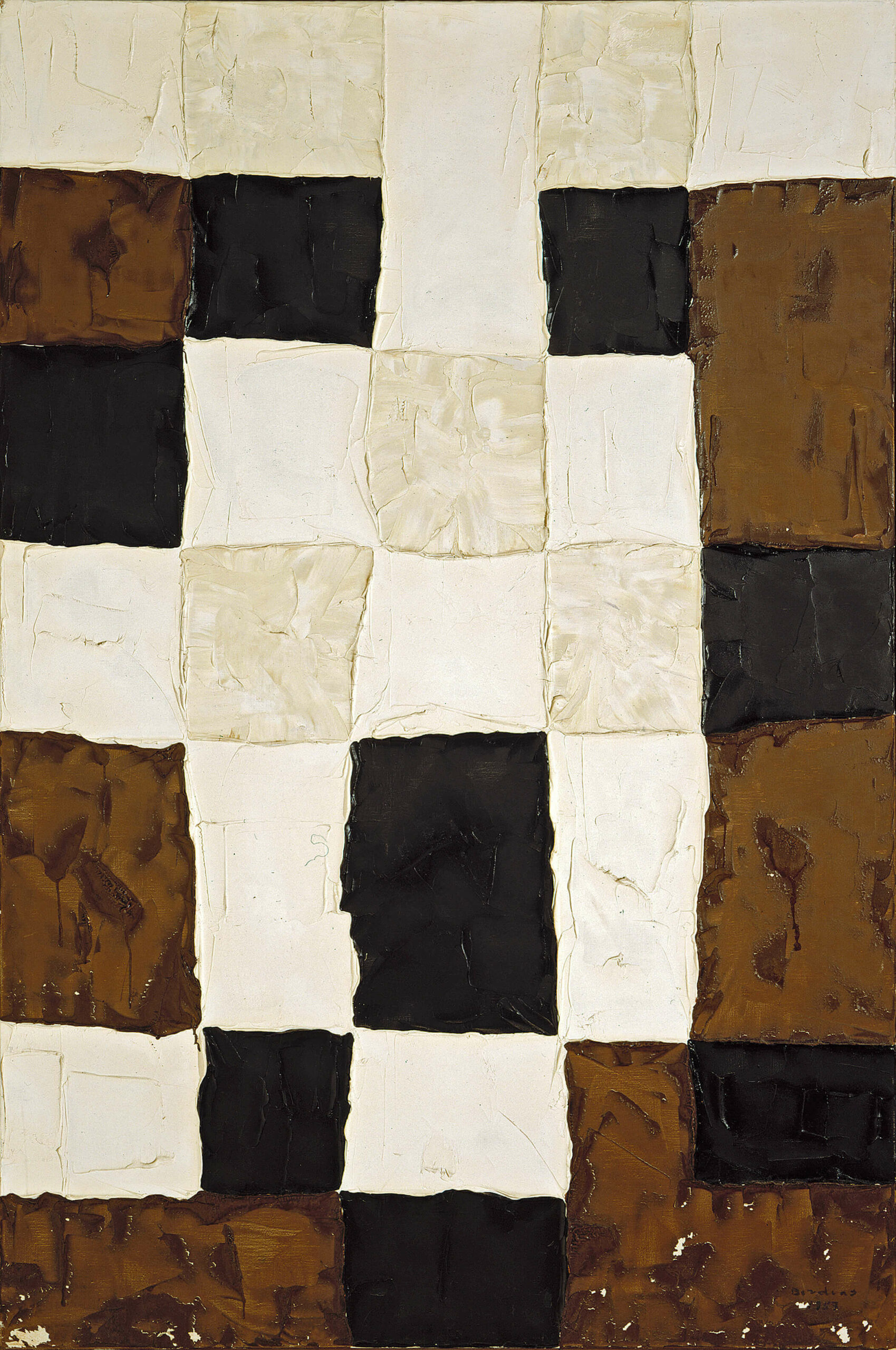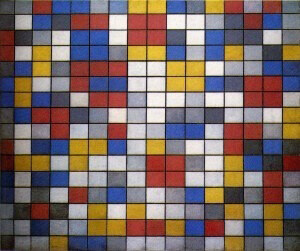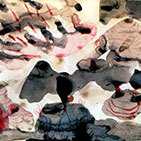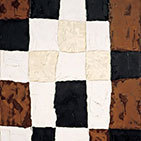Symphony on a White Checkerboard 1957

Paul-Émile Borduas, Symphony on a White Checkerboard or Symphony 2 (Symphonie en damier blanc ou Symphonie 2), 1957
Oil on canvas, 195 x 130 cm
Montreal Museum of Fine Arts

Borduas’s dialogue with the work of Piet Mondrian (1872–1944), which began in the early 1940s, reaches its peak in this painting. Undoubtedly Mondrian would have disapproved of the colour: brown tones were not part of his palette, which was limited to the primary colours—red, yellow, and blue—and the non-colours, black, grey, and white. The soft-edge lines delimiting the rectangles, not to mention the impasto in the application of the paint, would have also displeased the Dutch master. But the geometric presentation, the allusion to music in the title, and the dialogue between the different surfaces speak to a singular departure in the work of Borduas.
What the grid achieves in Mondrian’s paintings—to gather the elements of the painting at the surface, as in Composition with Grid 9: Checkerboard Composition with Light Colours, 1919—Borduas’s checkerboard achieves in equal measure, even with a palette limited to browns, blacks, pale ochre, and whites. Here Borduas has moved far away from any form of Tachism, or Lyrical Abstraction, having given equal importance to the construction of the painting, to its geometry, and to its dynamic equilibrium.

 About the Author
About the Author
 More Online Art Books
More Online Art Books
 Acknowledgements
Acknowledgements